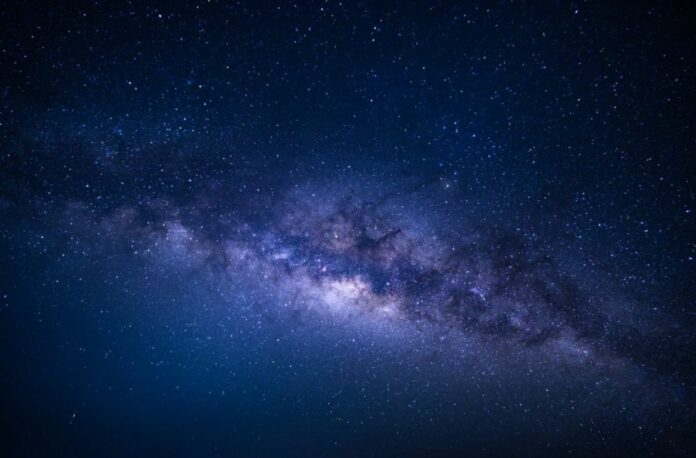“It’s amazing to be able to look so far back in time – to just 200 million years after the Big Bang- and be able to learn about the early Universe,” say the authors.
In one of the first astrophysics investigations of the cosmic dawn, the time in the early Universe when the first stars and galaxies emerged, scientists have been able to establish some important conclusions regarding the first galaxies to exist.
The University of Cambridge used data from India’s SARAS3 radio telescope to estimate the mass and energy production of the earliest stars and galaxies 200 million years after the Big Bang.
Researchers were able to set these limits on the age of the oldest galaxies by not finding the signal they were looking for, called the 21-centimeter hydrogen line.
This non-detection enabled researchers to constrain the early galaxies and rule out ideas like ineffective heaters of cosmic gas and efficient radio emitters.
The findings, which were published in the journal Nature Astronomy, mark a significant step in our understanding of how our Universe changed from being mostly empty to one filled with stars, even though we are unable to directly witness these early galaxies at this time.
One of the main aims of new observatories is to learn more about the early Universe, at the time when the first stars and galaxies formed. Using the SARAS3 data, researchers were able to produce a proof-of-concept study that opens the way to better comprehending this time in the history of the Universe.
Current telescopes have trouble picking up the cosmic signal of the first stars, which is re-radiated by dense hydrogen clouds. However, the SKA project (two next-generation telescopes that should be finished by the end of the decade) will likely be able to take pictures of the early Universe.
The 21-centimeter line is an ancient radio signal emitted by hydrogen atoms in the early Universe. Studies of the 21-centimeter line, done with radio telescopes like Cambridge’s REACH (Radio Experiment for the Analysis of Cosmic Hydrogen), can tell us about whole groups of even earlier galaxies. This is different from the recently launched JWST, which will be able to directly image individual galaxies from the early Universe. Early in 2023, REACH should start to show its first results.
Astronomers hunt for the 21-centimeter line by listening for a radio signal emitted by hydrogen atoms in the early Universe and modified by the radiation from the earliest stars and the hydrogen fog. The same group of researchers came up with a way to see through the fog of the early universe and pick up the light from the first stars earlier this year. This research used several of these methods.
In 2018, a different group of scientists working on the EDGES experiment published a result that suggested that this earliest light might have been found. The signal that was seen was much stronger than what would be expected from the simplest model of the early Universe. As of late, the SARAS3 data has cast doubt on this discovery; more observations are needed to verify the EDGES conclusion.
In a re-analysis of the SARAS3 data, the team led by Cambridge tried out different astrophysical scenarios that might explain the EDGES result, but they did not find a signal that matched up. Instead, the team was able to limit what the first stars and galaxies could be like.
The SARAS3 analysis findings are the first time that radio observations of the averaged 21-centimetre line have provided insight into the attributes of the early galaxies in the form of constraints on their key physical parameters.
The Cambridge team, in collaboration with researchers from India, Australia, and Israel, utilized SARAS3 data to search for signals from cosmic dawn, when the first galaxies formed. Researchers tried to use statistical modeling to find a signal in the SARAS3 data, but they couldn’t find one.
“We were looking for a signal with a certain amplitude,” adds lead author Harry Bevins. “But by not finding that signal, we can put a limit on its depth. That, in turn, begins to inform us about how bright the first galaxies were.”
“Our analysis showed that the hydrogen signal can inform us about the population of first stars and galaxies,” explains co-lead author Dr Anastasia Fialkov. “Our analysis places limits on some of the key properties of the first sources of light including the masses of the earliest galaxies and the efficiency with which these galaxies can form stars. We also address the question of how efficiently these sources emit X-ray, radio and ultraviolet radiation.”
“This is an early step for us in what we hope will be a decade of discoveries about how the Universe transitioned from darkness and emptiness to the complex realm of stars, galaxies and other celestial objects we can see from Earth today,” adds co-author Dr Eloy de Lera Acedo.
The observational investigation, the first of its sort in many ways, precludes scenarios in which the oldest galaxies were both a thousand times brighter in their radio-band emission than modern galaxies and poor hydrogen gas heaters.
“Our data also reveals something which has been hinted at before, which is that the first stars and galaxies could have had a measurable contribution to the background radiation that appeared as a result of the Big Bang and which has been travelling towards us ever since,” remarks de Lera Acedo, “We are also establishing a limit to that contribution.”
“It’s amazing to be able to look so far back in time – to just 200 million years after the Big Bang- and be able to learn about the early Universe,” adds Bevins.
Source: 10.1038/s41550-022-01825-6
Image Credit: Getty
